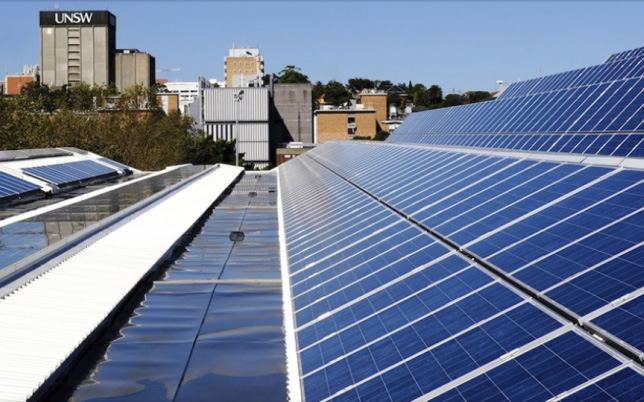Summary
The Cost-effective Si/Perovskite Tandem Modules on Passivating Contact Si Cells project will progress monolithic silicon-perovskite tandem (SPT) technology through the development of high-performing, industrially viable polysilicon sub-cells as well as efficient, scalable and stable perovskite sub-cells for SPTs, before being tested on Jinko Solar’s pilot production line with aims to achieve a module production capacity of 100MW/year.
Need
This project is funded under the ULCS PV Research and Development Round and will build on ARENA’s previous investment into solar PV that support projects aligning with ARENA’s ‘Solar 30 30 30’ target to improve module efficiency to 30 per cent and reduce total construction costs of utility scale solar farms to 30 cents per watt by 2030. Funding is being made available to focus on commercialisation prospects, which will take place after an initial R&D phase, to assist getting the new technologies into the market.
Perovskite-based tandems are considered the most promising technology to increase the efficiency of commercial solar cells in a cost-effective way, and monolithic SPTs have attracted significant attention by industry due to their relative ease of fabrication and high efficiency potential. The market share of Si-based tandems is predicted to increase significantly by 2030, thereby highlighting the importance of economically attractive tandem technologies entering the market early.
Action
The project will progress monolithic silicon-perovskite tandem (SPT) technology to the point of commercial production, with significant anticipated production capacity by the end of the project. The key activities of the project include:
- Developing high-performing, industrially feasible poly-Si sub-cell for SPTs;
- Developing efficient, stable, scalable perovskite sub-cells for SPTs; and
- Developing cost-effective SPTs with excellent stability, including developing industrially-viable encapsulation technologies.
The project also aims to undertake commercialisation activities, including building and operating a pilot line for the fabrication of tandem cells to enable large volume production of tandem cells and modules. The pilot line will be built based on the most cost-effective implementation. The aim will be to increase confidence in the technology (through better statistics, based on much larger volumes of production data) and further refine the technology.
Outcome
The project will achieve the following outcomes:
- Increased skills, capacity and knowledge relevant to renewable energy technologies through the dissemination of key research findings to the photovoltaic research community, industry and the public;
- Improvement in the technology readiness and commercial readiness of Solar PV through the development and testing of high-efficiency, stable silicon-perovskite tandem solar cells based on doped polysilicon bottom cell technology;
- Acceleration of the development of commercially competitive modules with efficiencies above 30 per cent;
- Acceleration of cost reductions for utility scale solar PV towards 30 cents per watt; and
- Improvement in cell stability in order to support progression towards 30-year solar module asset life.
Additional impact
This project will generate new intellectual property (IP). Project IP in conjunction with background IP is expected to generate considerable international interest and lead to large-scale investment in tandem module manufacturing.
The project will also create more than 11 jobs including chief investigators contributing to the project, newly recruited research staff, and related PhD students.




